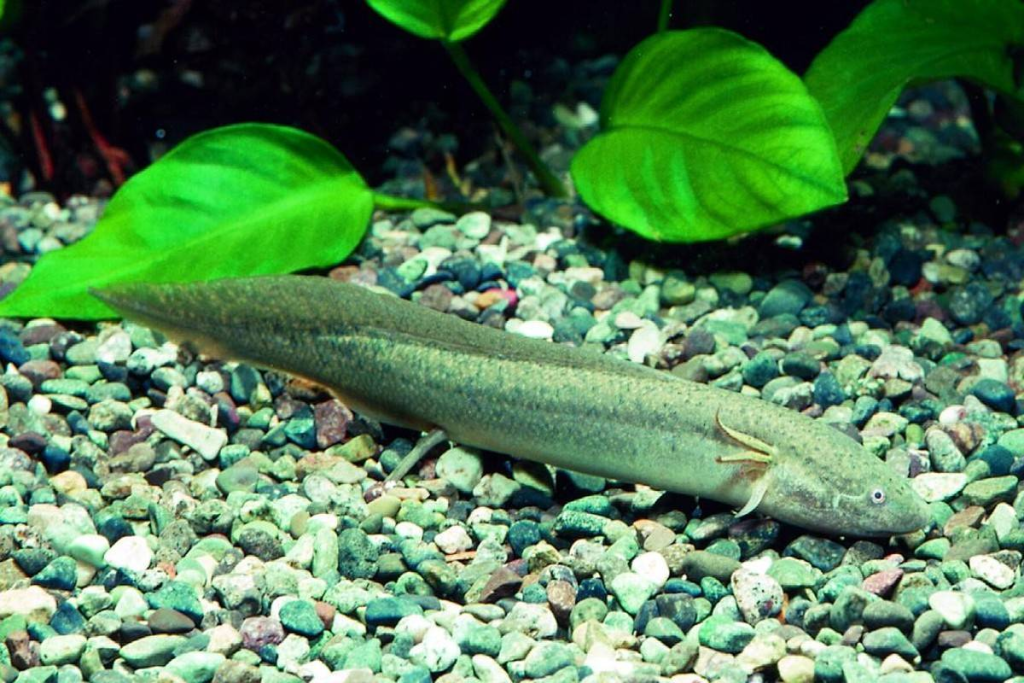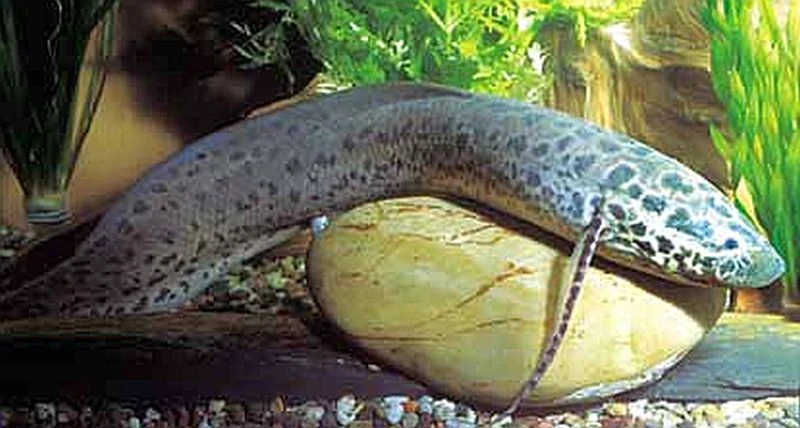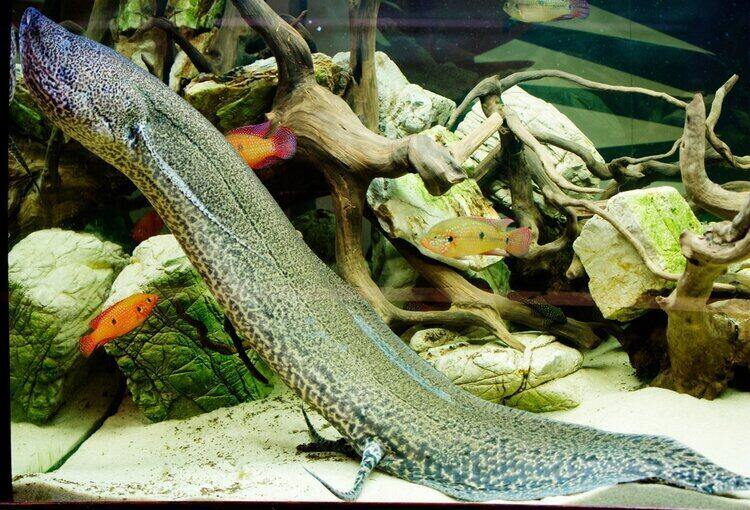The African lungfish, a remarkable creature found in the rivers and lakes of sub-Saharan Africa, challenges our conventional understanding of fish. This aquatic marvel can survive without water for months, a feat no other fish can claim. With its ability to breathe air and hibernate in mud, the African lungfish is one of nature’s most ingenious survivalists. Let’s dive deeper into the fascinating world of this extraordinary species.
What Is the African Lungfish?

The African lungfish, scientifically known as Protopterus, belongs to a group of ancient fish species that have evolved unique traits for survival in the harsh conditions of sub-Saharan Africa. There are several species of lungfish, all sharing some extraordinary characteristics that distinguish them from most fish.
Physical Characteristics of the African Lungfish
From the moment you lay eyes on the African lungfish, it’s clear that this fish is far from ordinary. Ranging from 44 to 200 cm (17 to 79 inches) in length, its elongated body resembles that of an eel. Its fins also set it apart—thin, thread-like pectoral and anal fins give the fish an eel-like movement when swimming. The dorsal and caudal fins, on the other hand, are fused into one structure, providing the lungfish with fluid, undulating movements.
Interestingly, lungfish are capable of crawling along the bottom of their aquatic environment using their pectoral fins. This makes them one of the few fish species that can traverse the ground like an amphibian, setting them even further apart from other aquatic creatures.
How Do African Lungfish Breathe?
The true wonder of the African lungfish lies in its ability to breathe air. Unlike most fish, which extract oxygen from water via gills, lungfish possess both gills and lungs, enabling them to extract oxygen from the atmosphere. This dual respiratory system allows them to survive in low-oxygen environments and even breathe air when submerged.
However, they cannot remain submerged indefinitely. At times, lungfish must rise to the surface to gulp air. If deprived of oxygen for too long, they risk suffocation, demonstrating how crucial their lung function is for survival. This reliance on atmospheric oxygen makes the lungfish uniquely suited to environments that may lack oxygen-rich water.
Surviving Harsh Conditions: The Secret to the Lungfish’s Survival
One of the most astonishing features of the African lungfish is its ability to endure Africa’s dry seasons. During these periods, rivers and lakes dry up, leaving the lungfish with little water to survive in. Yet, the lungfish has adapted to these extreme conditions with a truly ingenious survival strategy.
When water levels fall, the lungfish enters a dormant state by burrowing into the mud. The fish can dig deep into the riverbed using its powerful mouth and gills, creating a burrow to escape the scorching heat and dry conditions above. This is not just a temporary retreat—it’s a hibernation-like state that can last for months or even years.
The Fascinating Cocoon: How Lungfish Survive in Dry Conditions

To survive the dry season, the lungfish constructs a protective cocoon around its body. After burrowing into the mud, it secretes mucus from its mouth, which hardens to form a tough, waterproof layer. This cocoon serves as a shield against dehydration, while only the fish’s mouth remains exposed to allow for air intake.
The lungfish essentially enters a form of hibernation, drastically slowing its metabolism to survive until the rains return. This astonishing survival mechanism enables the lungfish to withstand extreme droughts, making it one of the most resilient creatures on Earth.
The Role of Lungfish in the Ecosystem
Despite its remarkable survival adaptations, the African lungfish plays a crucial role in the ecosystem of sub-Saharan Africa. As both predator and prey, lungfish help maintain balance within their habitat. They feed on smaller fish, crustaceans, and invertebrates, while larger predators such as crocodiles and birds rely on lungfish as a food source.
The lungfish’s ability to endure environmental extremes also highlights its importance in the local food web. Its adaptability to harsh conditions ensures that it remains a vital part of the ecological balance in African freshwater systems.
A Living Link to Prehistoric Times

Lungfish are often referred to as “living fossils” because they closely resemble ancient fish species that lived hundreds of millions of years ago. These early fish are believed to be some of the first vertebrates to transition from water to land, and lungfish provide a fascinating glimpse into this critical period in evolutionary history.
The anatomy of the lungfish, particularly its lungs, offers valuable insights into the evolution of land-dwelling vertebrates. By studying the lungfish, scientists can learn more about the evolutionary leap that led to the emergence of amphibians and, eventually, mammals, birds, and reptiles.
Conclusion: The Marvel of the African Lungfish
The African lungfish is a true marvel of the natural world. Its unique ability to survive out of water, combined with its remarkable respiratory system and mud-cocooning behavior, makes it one of the most fascinating species on Earth. This extraordinary fish serves as a living testament to the power of evolution and the adaptability of life, even in the harshest environments.
The lungfish’s survival strategies, its role in the ecosystem, and its deep evolutionary ties to the past make it an invaluable subject of study. Whether thriving underwater or buried in a mud cocoon, the African lungfish continues to captivate and inspire, demonstrating nature’s boundless ingenuity and resilience.


